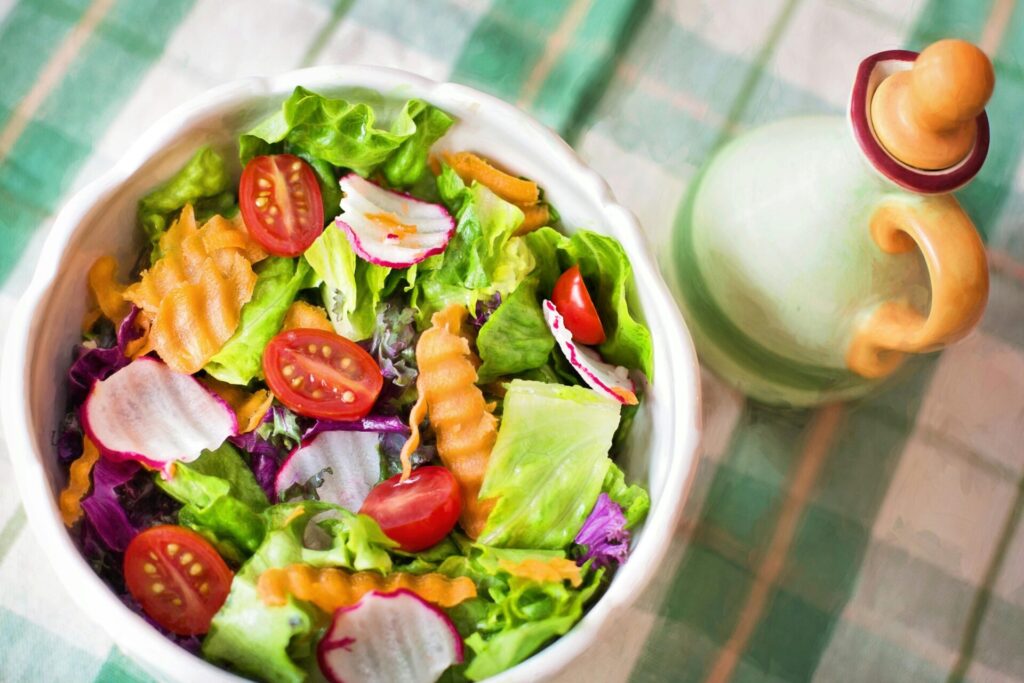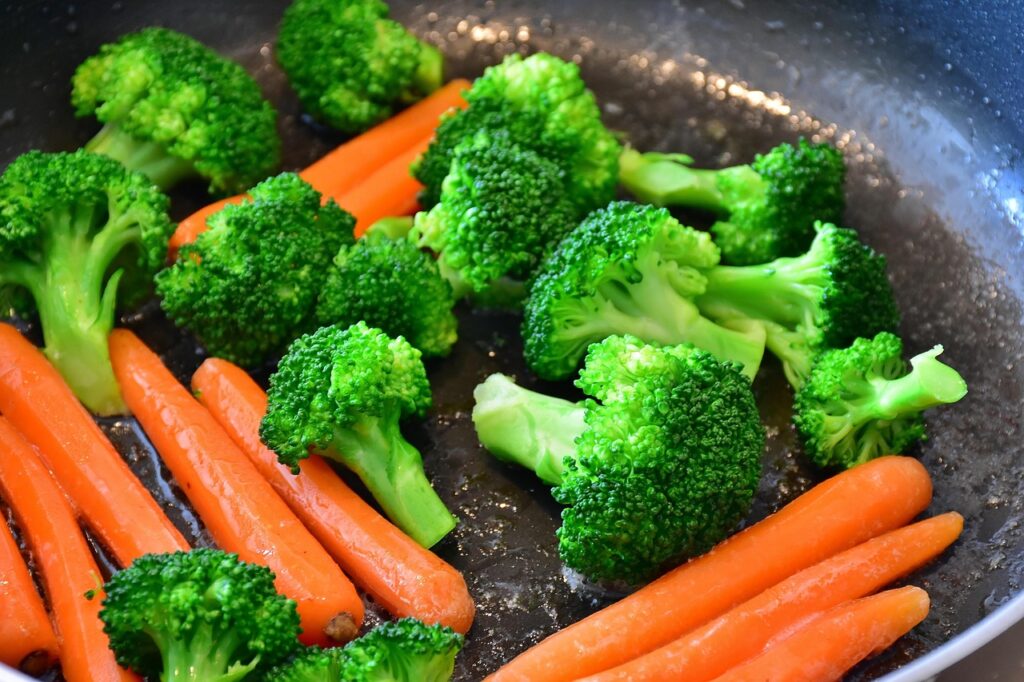How to Reduce Inflammation in the Body Through Diet: A Complete Guide to Healing from Within
Contents
- 1 How to Reduce Inflammation in the Body Through Diet: A Complete Guide to Healing from Within
- 1.0.0.0.0.1 Read DISCLAIMER
- 1.0.0.0.0.2 The material presented here is for general informational and educational purposes only and is not medical advice. Although we attempt to provide current and accurate information, this blog should not be used as a replacement for professional medical consultation, diagnosis, or treatment. In all cases, consult your physician or an accredited medical practitioner with regards to any medical condition or treatment. Do not ignore professional medical advice or wait for it on the basis of information provided by this blog. In a medical emergency, call emergency services immediately.
- 1.1 Understanding the Hidden Fire Inside You
- 1.2 How Food Shapes the Inflammatory Response
- 1.3 Recognizing the Foods That Fuel Inflammation
- 1.3.1 Refined Sugars and Sweetened Beverages
- 1.3.2 Refined Grains
- 1.3.3 Processed and Red Meats
- 1.3.4 Trans Fats and Unhealthy Oils
- 1.3.5 Highly Processed Snacks
- 1.3.6 Embracing Foods That Cool the Flames
- 1.3.7 Fresh, Vibrant Vegetables
- 1.3.8 Colorful Fruits
- 1.3.9 Healthy Fats
- 1.3.10 Whole Grains
- 1.3.11 Legumes and Plant Proteins
- 1.3.12 Herbs and Spices
- 1.4 The Gut–Inflammation Connection
- 1.5 The Role of Blood Sugar Stability
- 1.6 Hydration and Inflammation
- 1.7 Emotional Eating and Inflammation
- 1.8 Building Your Personal Anti-Inflammatory Plate
- 1.9 Patience, Consistency, and Listening to Your Body
- 1.10 The Long-Term Rewards
- 1.11 Final Thoughts
- 1.12 FAQs with Paragraph Answers
Reduce inflammation naturally through diet with nutrient-rich foods, balanced meals, and smart eating habits to heal from within.
Read DISCLAIMER
The material presented here is for general informational and educational purposes only and is not medical advice. Although we attempt to provide current and accurate information, this blog should not be used as a replacement for professional medical consultation, diagnosis, or treatment. In all cases, consult your physician or an accredited medical practitioner with regards to any medical condition or treatment. Do not ignore professional medical advice or wait for it on the basis of information provided by this blog. In a medical emergency, call emergency services immediately.
Understanding the Hidden Fire Inside You
Imagine your body as a bustling city. Every cell is like a citizen, busy keeping life moving smoothly. Now, imagine an unexpected fire breaking out in the city. Initially, the firefighters rush in, control the blaze, and protect the city from harm. This is what acute inflammation does in your body — it’s a natural, life-saving response to injury or infection. But what if the fire never fully goes out? What if it keeps smoldering quietly in the background, day after day? That’s chronic inflammation — a silent troublemaker that can slowly damage tissues, disrupt your health, and invite disease.
Many people think of inflammation only when they see swelling after a sprain or redness from a cut. But inflammation runs deeper. It can affect your heart, brain, gut, joints, and even mood. Scientists link chronic inflammation to conditions like arthritis, diabetes, heart disease, Alzheimer’s, depression, and even some cancers.
The good news? Your diet can be one of your most powerful tools to turn down this internal fire. Just as the wrong foods can fan the flames, the right ones can calm them. This is not about temporary fixes or crash diets; it’s about reshaping your daily choices so that every meal becomes a gentle healer rather than a hidden saboteur.

How Food Shapes the Inflammatory Response
Food is not just fuel — it’s information for your body. Every bite you take sends biochemical signals that can either encourage healing or trigger more inflammation.
Highly processed foods, refined sugars, unhealthy fats, and certain additives often act like smoke in the city — they irritate the immune system, prompting it to stay on high alert. On the other hand, whole, nutrient-rich foods work like skilled architects, repairing damage, restoring balance, and guiding the immune system toward a calmer state.
Think of your diet as a constant conversation between your fork and your immune cells. If you fill your plate with anti-inflammatory foods, you’re essentially telling your body: “You are safe. You can heal.”
Recognizing the Foods That Fuel Inflammation
To reduce inflammation through diet, it’s essential to know the usual culprits. While occasional indulgence won’t ruin your health, making certain foods a regular part of your diet can keep your body in a perpetual inflammatory state.
Refined Sugars and Sweetened Beverages
When you consume sugary snacks, pastries, or soda, your blood sugar spikes sharply. This sudden rise encourages the release of inflammatory messengers. Over time, repeated spikes lead to insulin resistance — a key driver of chronic inflammation.
Refined Grains
White bread, white rice, and pasta made from refined flour have most of their natural fiber stripped away. Without fiber, digestion becomes too quick, sending your blood sugar on a rollercoaster ride that fuels inflammation.
Processed and Red Meats
Bacon, sausages, and even certain processed poultry products contain preservatives and advanced glycation end products (AGEs) — compounds formed when meat is cooked at high temperatures. These can activate inflammatory pathways in the body.
Trans Fats and Unhealthy Oils
Artificial trans fats, found in some margarines, baked goods, and fried fast foods, are among the most inflammatory substances you can eat. Even excess omega-6 fatty acids from refined vegetable oils can tip the balance toward inflammation if not balanced with omega-3s.
Highly Processed Snacks
Chips, crackers, and packaged pastries are often made with refined carbs, poor-quality fats, and additives — a triple threat for your body’s inflammatory balance.
Embracing Foods That Cool the Flames
Reducing inflammation isn’t about deprivation — it’s about abundance. When you begin to fill your meals with foods that naturally soothe the immune system, something remarkable happens: your energy improves, your digestion becomes more comfortable, and you may even notice less pain or stiffness.

Fresh, Vibrant Vegetables
Leafy greens like spinach, kale, and Swiss chard are packed with antioxidants, vitamins, and minerals that combat oxidative stress — a major contributor to inflammation. Cruciferous vegetables like broccoli and Brussels sprouts contain compounds that support detoxification pathways, helping the body clear inflammatory waste.
Colorful Fruits
Berries, cherries, oranges, and pomegranates are not just beautiful; they’re loaded with polyphenols and vitamin C. These plant compounds neutralize free radicals, which would otherwise trigger inflammatory damage.
Healthy Fats
Avocados, olives, nuts, and seeds provide monounsaturated fats, which act like a soothing balm for inflamed tissues. Omega-3 fatty acids from fatty fish like salmon, sardines, and mackerel are especially powerful at reducing inflammatory molecules.
Whole Grains
Brown rice, quinoa, oats, and barley retain their natural fiber and nutrients, helping regulate blood sugar and feeding beneficial gut bacteria that keep inflammation in check.
Legumes and Plant Proteins
Beans, lentils, and chickpeas offer plant-based protein, fiber, and micronutrients without the inflammatory downsides of processed meats.
Herbs and Spices
Turmeric, ginger, garlic, and cinnamon have been celebrated for centuries for their healing qualities. Curcumin in turmeric, for example, is a potent anti-inflammatory compound that works almost like a natural medication without the side effects.
The Gut–Inflammation Connection
Your gut is more than a digestion station — it’s home to trillions of bacteria that constantly interact with your immune system. A balanced gut microbiome keeps inflammation under control. But when the delicate ecosystem is disrupted by processed foods, stress, or antibiotics, harmful bacteria can overgrow, releasing toxins that leak into the bloodstream and trigger widespread inflammation.
A diet rich in fiber, fermented foods (like yogurt, kefir, sauerkraut, and kimchi), and prebiotic-rich vegetables (like onions, garlic, and leeks) helps maintain a healthy gut lining and a thriving community of beneficial microbes.
The Role of Blood Sugar Stability
Unstable blood sugar levels act like gasoline for inflammation. Every sharp rise and fall in glucose can stress your body and set off inflammatory responses. Choosing foods with a low glycemic load, combining carbohydrates with protein or healthy fats, and eating balanced meals can help keep blood sugar steady.
For example, instead of having white toast and jam for breakfast, try whole grain bread topped with avocado and a sprinkle of seeds. This combination provides complex carbs, healthy fats, and fiber — all of which slow digestion and reduce inflammatory spikes.
Hydration and Inflammation
While diet often focuses on what we eat, what we drink is equally important. Dehydration can make your blood thicker, slow nutrient delivery, and impair your body’s ability to flush out inflammatory waste. Water is essential for keeping tissues hydrated, joints lubricated, and cellular processes running smoothly.
Infusing water with lemon, cucumber, or mint can make it more enjoyable and add a gentle antioxidant boost without sugar.

Emotional Eating and Inflammation
Food choices are rarely just about nutrients — they’re also about emotions, habits, and memories. Stress, loneliness, or boredom can lead to comfort eating, often involving sugary or fatty processed foods that worsen inflammation.
Learning to tune into your hunger cues, practicing mindful eating, and finding non-food ways to cope with emotions — like walking, journaling, or calling a friend — can shift your relationship with food from reactive to intentional.
Building Your Personal Anti-Inflammatory Plate
Reducing inflammation isn’t about following a rigid set of rules. It’s about building a lifestyle where each meal contributes to your body’s healing. You might start by replacing one processed snack with a piece of fresh fruit and a handful of nuts, or by adding an extra serving of vegetables to dinner. Over time, these small changes accumulate into a diet that consistently supports health.
Your plate might look like this: half filled with colorful vegetables, a quarter with quality protein, and a quarter with whole grains or legumes. Drizzle with healthy fats, sprinkle with herbs, and you have a meal that’s both nourishing and inflammation-fighting.
Patience, Consistency, and Listening to Your Body
Chronic inflammation develops over months or years, and reducing it takes time. You may not notice dramatic changes overnight, but as weeks pass, you might feel lighter, more energetic, and more mentally clear. Joint stiffness may ease, digestion may improve, and you might find your mood lifting.
Listen to your body’s feedback. If certain foods make you feel bloated, tired, or achy, try removing them for a while and see how you feel. This is not about perfection but about creating an ongoing dialogue with your body’s needs.
The Long-Term Rewards
An anti-inflammatory diet doesn’t just reduce symptoms — it protects you for the long haul. By keeping inflammation in check, you lower your risk for many chronic diseases, preserve your mobility, and support healthy aging. You’re not just eating for today; you’re investing in the quality of your life for decades to come.
Final Thoughts
Inflammation may be a natural process, but when it becomes chronic, it can quietly erode your health. Through mindful food choices, you have the power to turn down this hidden fire. Every colorful vegetable, every omega-3-rich bite, every sip of clean water is a step toward a calmer, healthier, and more vibrant you.
The path to healing starts on your plate — and the journey is as nourishing as the destination.
FAQs with Paragraph Answers
- What is inflammation and why does it occur?
Inflammation is your body’s natural defense mechanism against injury, infection, or toxins. It helps heal wounds and fight harmful invaders. However, when it becomes chronic due to poor diet, stress, or lifestyle factors, it can damage healthy tissues and increase the risk of long-term diseases. - How can diet influence inflammation levels?
Your diet acts like a signal to your immune system. Processed foods, sugar, and unhealthy fats can trigger an overactive immune response, while whole, nutrient-dense foods can calm it down and promote healing. - Which foods are most effective at reducing inflammation?
Fruits, vegetables, fatty fish, nuts, seeds, olive oil, legumes, and whole grains are rich in antioxidants, fiber, and healthy fats, all of which help lower inflammatory markers in the body. - Are there foods that make inflammation worse?
Yes. Processed meats, refined sugars, trans fats, and highly refined grains can contribute to chronic inflammation by spiking blood sugar, creating oxidative stress, and upsetting gut health. - Can reducing inflammation help with joint pain?
Absolutely. Chronic inflammation can worsen joint pain by damaging cartilage and increasing swelling. An anti-inflammatory diet can ease symptoms and improve mobility over time. - How does sugar affect inflammation?
Excess sugar causes spikes in blood glucose, triggering the release of pro-inflammatory chemicals. Over time, this can lead to insulin resistance and widespread low-grade inflammation. - Is an anti-inflammatory diet the same as a weight loss diet?
Not necessarily. While reducing inflammation may help you lose weight by balancing hormones and improving metabolism, the primary focus is on nutrient quality rather than calorie restriction. - How long does it take to see results from an anti-inflammatory diet?
Results vary, but many people notice improvements in energy, digestion, and pain within a few weeks. Long-term changes, like reduced disease risk, happen over months or years. - Can hydration impact inflammation?
Yes. Staying hydrated helps flush toxins, improve circulation, and support the body’s natural repair systems, all of which reduce inflammation. - Are supplements necessary for reducing inflammation?
Not always. A well-balanced diet rich in whole foods can provide all the nutrients you need. However, omega-3s, vitamin D, or curcumin supplements may help if your diet is lacking. - How does gut health relate to inflammation?
A healthy gut microbiome acts as a barrier against harmful substances that trigger inflammation. Eating fiber-rich and fermented foods supports beneficial bacteria and reduces inflammatory triggers. - Can stress affect inflammation in the body?
Yes. Chronic stress increases the production of cortisol and inflammatory molecules. Pairing an anti-inflammatory diet with stress management techniques can improve overall results. - What role do healthy fats play in reducing inflammation?
Healthy fats like omega-3 fatty acids from fish and monounsaturated fats from olive oil help reduce the production of inflammatory chemicals and protect cell membranes. - Can an anti-inflammatory diet help with skin conditions?
Yes. Conditions like acne, eczema, and psoriasis often improve when inflammation is reduced through a diet rich in antioxidants, omega-3s, and nutrient-dense foods. - Is it possible to completely eliminate inflammation?
No. Some inflammation is necessary for healing and immune defense. The goal is to prevent excessive, chronic inflammation through a balanced and mindful diet.
